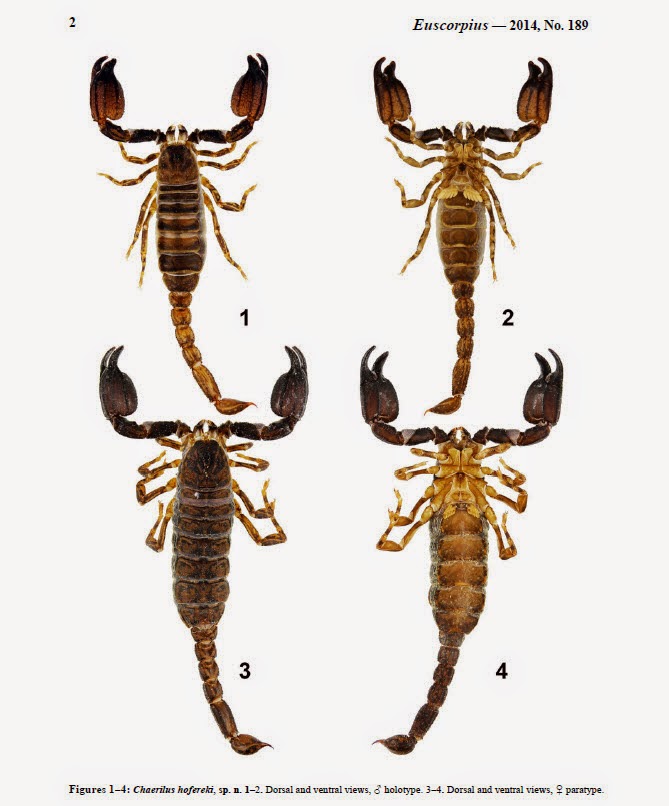The large scorpions from West Africa in the genus Pandinus Thorell, 1841 (Scorpionidae) are well known among both experts and amateurs, and in particular the "celebrity" species Pandinus imperator (C. L. Koch, 1841). Surprisingly, very little research have been done on the different Pandinus populations of western Africa.
Wilson Lourenco has recently published an article on the genus Pandinus in western Africa which resulted in one new species and one restored species from synonymy.
Pandinus camerounensis Lourenco, 2014 - New species from Cameroon.
Pandinus roeseli (Simon, 1872) - Restored from synonymy with P. imperator. Guinea.
Abstract:
Among the ‘giant species’ of scorpions which belong to the genus Pandinus Thorell, 1876, three are protected by the Washington Convention. These are Pandinus imperator (Koch, 1841), Pandinus dictator (Pocock, 1888) and Pandinus gambiensis Pocock, 1899. In theory, these species can be easily recognised by scorpion experts and even non-experts. However, at least one, P. imperator, remains dubious and unclearly characterized. Herein, the argument pleading for the status of P. imperator is discussed. It is hypothesized that across the known distribution of P. imperator at least three or four distinct populations may be recognized. Pandinus roeseli (Simon, 1872) is restablished as a valid species and a new species, Pandinus camerounensis sp. n. is described from the North of Cameroon.
Reference:
Lourenco WR. Further considerations on the identity and distribution of Pandinus imperator (C. L. Koch, 1841) and description of a new species from Cameroon (Scorpiones: Scorpionidae). Entomologische Mitteilungen aus dem Zoologischen Museum Hamburg. 2014;17(192):139-51.
Thanks to professor Lourenco for sending me his article!
Family Scorpionidae



















